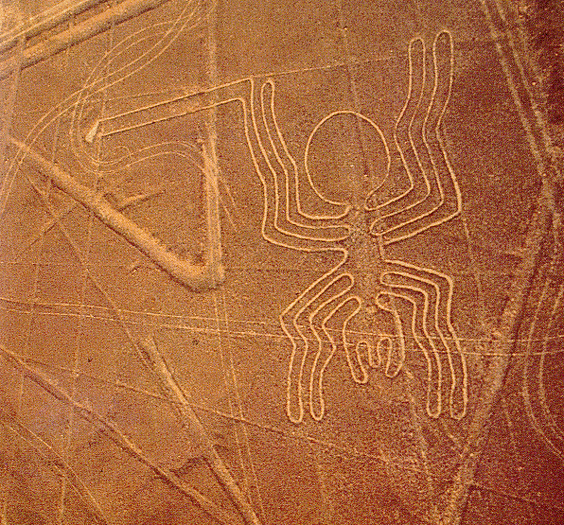
To get to this internet cafe, Sarah and I ducked out of our hostel, glancing over our shoulders at the group of boys sitting on the corner drinking beer, and made our way down the street like a pair of soldiers under fire. But, again, I think I´m getting ahead of myself...
Let´s start with this morning.
So, it turns out that we will be spending longer in Cusco than we had originally thought. We´d initially planned on going up to see Machu Pichu tomorrow morning, but the train was sold of out tickets, so we´ll be going up the day after tomorrow.
Which actually isn´t a bad thing. With my stomach bug behind me, Cusco is really growing on me. I´d actually be curious to find out how far away Cusco is from both Nepal and Spain, because it feel like its literally halfway between the two. Majestic mountains and Spainish colonial style arcades built on top of the ruins of Inca walls. As corny as it sounds, the sky is literally a darker blue here. The atmosphere so thin, the blue becomes tinted with the blackness of space.
Sure, its a littler touristy, but at the same time, one can definitely appreciate why. White buildings with red tiles roofs seem to literally climb the surrounding hillsides. Narrow cobblestone roads wind toward the numerous city plazas.
So, with an extra day to burn in Cusco, Sarah and I set off on an 8 kilometer hike to see the ruins that surround Cusco. Basically, the plan was to have him drop us off at the farthest of the ruins, and then we´d hike back to town, stopping at the various other ruins as we went.
First up, and farthest away from town, was Tambo Machey, or El Bano del Inca. A small, quiet ruin of what used to serve as a ceremonial bath. Just a little farther down the road was Puca Pucara, the ´red fort,´ that a guide tried to explain to us was a special place for holy men in training, built on a strange magnetic field.
Then, as we made our way to the next ruin, a car drove by and a water balloon hit me square in the chest! Punk Peruvian teenagers!!!
But, we soldiered on. And, after a little off-road hiking, and getting lost once or twice, we arrived at the third ruin, Qenko. Qenko stands for "zig-zag." At first, it didn´t seem as impressive as the others, but slowly it revealed itself more and more. With narrow passages and caves cut directly into massive rock formations that rose from the Peruvian countryside.
After that, we made our wat to the final site: Sacsayhuaman. Now, pause for a second, and say that name outloud, and you´ll see why its the one name on this trip that might make me giggle more than "titicaca." As we made our way to the site, I let Sarah walk a little ahead of me, and repeatedly said: "I think I see Sacsayhuaman ahead."
Yes, I can by immature at times.
Despite its giggle-worthy name, Sacsayhuaman delivered on being a massive and impressive ruin. At one time it was a fort and "head of the puma" (Cusco was originally laid out to for the shape of a puma), but the Spanish reused a large majority of its rocks in their own buildings. But, even what remained was impressive. And, climbing to the top of it provided a stunning 360 degree view, including all of Cusco spread out below us.
Having seen all the ruins, Sarah and I made our way back into Cusco. Making our way down the narrow streets and alleys, we approached a youth sitting on the corner holding a spray can. He didn´t seem right, so I sort of gave him the evil eye as I passed. But, apparently, it wasn´t strong enough, because as Sarah passed, he sprayed her with something tat looked liked shaving cream. Punk!!!
Then, as we walked across the plaza, another water balloon came hurling out of no where, and exploded at our feet. Suddenly, we were feeling paranoid. "Look, over there, that guy has a spray can like that kid! And over there, another one! And those kids on the corner have water ballons in those buckets! Egad! There´s water balloon debris all over! It´s not safe here! Quick, lets duck into that restaurant!"
Safely inside the restaurant, we ordered lunch, and tried to figure out what was going on. At a loss, we asked the waiter "do you know what the deal is with all the water balloons and spray stuff?"
The waiter gave us a confused look and replied "Its the last day of Carnival!"
Suddenly it all made sense. It wasn´t some organized attempt by the youth or Cusco to run the foreigners out! It was Carvinal!
After lunch we made our way back to our Hostel, and began to see things in a new light. All around us, kids were tossing water balloons at each other. Full-scale, city-wide, water-war. As we neared our hostel, we saw a group of kids dumping water on each other with buckets across the street from the entrance.
"If we just walk quietly, and don´t draw attention to ourselves, we should be ok."
We walked up to the hostel door, and knocked. Ezekial, the young boy who´s dad runs the hostel, opened the door.
"Hola!" Sarah and I both said to him.
"No! No! No! No!" Was his response. His eyes growing wide as he peered beyond us.
Realizing what was about to happen, without turning around, I pushed my way past him and into the hostel. Sarah attempted to leap in after me, but not quite fast enough... and a buckets-worth of water crashed square into her back, soaking her head to toe.
Which brings us to the start of this entry, and our furitive dash to the internet cafe.
Gotta love Cusco. Even the water balloons.








